
Luisa Ferida, real surname Manfrini, was an Italian stage and film actress. She was one of divas in Italian cinema during decade 1935–1945 and she was the highest paid movie star of that period. The actress was famous as a films diva and she is remembered for her tragic death; in fact during the period of anti-fascist vendettas, immediately after Italian Civil War, she was assassinated, as was later proved by the Milan Court of Appeal, by shooting following a summary trial carried out by some partisans: she was shot with her lover, the actor and member of Decima Flottiglia MAS Osvaldo Valenti, as accused of alleged and hypothetical participation in war crimes and torture in connection with so-called Koch gang, facts of which she was then deemed innocent after the war. Therefore a war pension was allocated to the mother, who had no other source of income.

Aldo Fabrizi was an Italian actor, director, screenwriter and comedian, best known for the role of the heroic priest in Roberto Rossellini's Rome, Open City and as partner of Totò in a number of successful comedies.
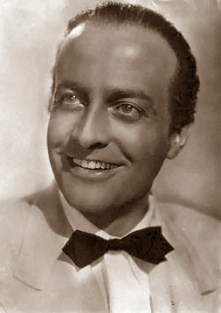
Osvaldo Valenti was an Italian film actor. Valenti starred in several successful Italian movies of the late 1930s and early 1940s, such as the famous The Iron Crown and The Jester's Supper. He appeared in more than 50 films between 1928 and 1945. He and his lover, Luisa Ferida, were executed by partisans in Milan, Italy, due to their links with Fascism. Their story was portrayed in the 2008 film Wild Blood.
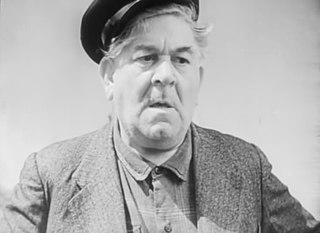
Giovanni Grasso was an Italian stage and film actor. He appeared in more than 80 films between 1910 and 1955. He was born and died in Catania, Sicily, Italy. Born into a family of marionettists, he was cousin and namesake of Giovanni Grasso, a respected stage actor specialized in the Sicilian language repertoire, so he assumed at the beginning of his career the stage name "Giovanni Grasso Junior" to stand out. He was mainly active on stage, often acting together with his wife, Virginia Balestrieri.

Leda Gloria was an Italian film actress. She appeared in 66 films between 1929 and 1965. During the expansion of Italian cinema of the Fascist era of the 1930s and early 1940s she appeared in starring roles, later transitioning into character parts after the Second World War. She appeared in the Don Camillo series of films, playing the wife of Gino Cervi's Giuseppe Bottazzi.

Headlights in the Fog is a 1942 Italian drama film directed by Gianni Franciolini and starring Fosco Giachetti, Luisa Ferida and Antonio Centa. The film's art direction was by Camillo Del Signore. It was made at the Palatino Studios in Rome and on location in Piedmont and Liguria.
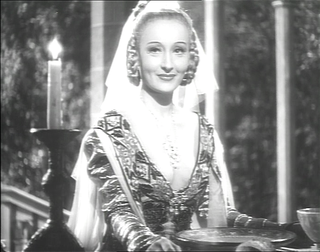
The Jester's Supper is a 1942 Italian historical film directed by Alessandro Blasetti and starring Amedeo Nazzari, Osvaldo Valenti and Clara Calamai. It was based on a play of the same title by Sem Benelli, which had later been turned into an opera by Umberto Giordano. Like the play, the film is set in the 15th century Florence of Lorenzo the Magnificent and portrays a rivalry that leads to a series of increasingly violent practical jokes.

Blood Wedding is a 1941 Italian drama film directed by Goffredo Alessandrini and starring Beatrice Mancini, Fosco Giachetti and Luisa Ferida. It is set in 19th century South America, and features an arranged marriage. The film is based on the novel Immacolata by Lina Pietravalle.
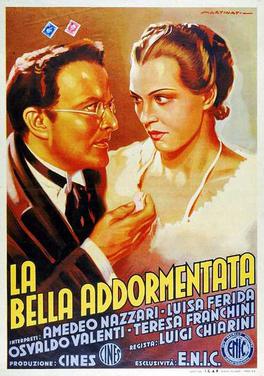
Sleeping Beauty is a 1942 Italian drama film directed by Luigi Chiarini and starring Luisa Ferida, Amedeo Nazzari and Osvaldo Valenti. The film was screened at the 1942 Venice Film Festival. It is based on a 1919 play by Pier Maria Rosso di San Secondo. It belongs to the movies of the calligrafismo style.
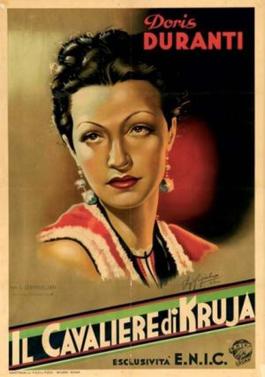
The Cavalier from Kruja is a 1940 Italian war film directed by Carlo Campogalliani and starring Doris Duranti, Antonio Centa and Leda Gloria. The film portrays the 1939 Italian invasion of Albania. It was made as a propaganda work in support of the Fascist regime of Benito Mussolini.
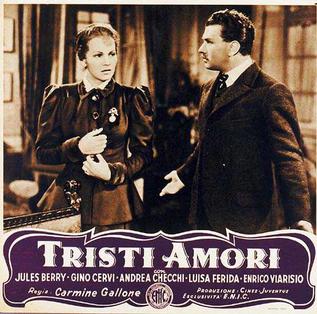
Sad Loves is a 1943 Italian historical drama film directed by Carmine Gallone and starring Jules Berry, Gino Cervi and Andrea Checchi. It was based on the play of the same title by Giuseppe Giacosa. It was made at Cinecittà in Rome. It is set in the 1880s.
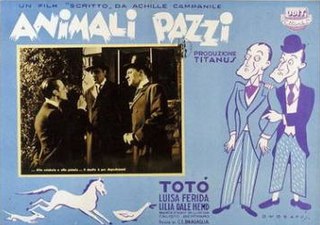
Mad Animals is a 1939 Italian "white-telephones" comedy film directed by Carlo Ludovico Bragaglia and starring Totò, Luisa Ferida and Calisto Bertramo. It was made at the Titanus Studios in Rome.
Bayonet is a 1936 Italian historical adventure film directed by Ferdinando Maria Poggioli and starring Nerio Bernardi, Leda Gloria and Mimì Aylmer. It portrays the life of Giacomo Casanova.
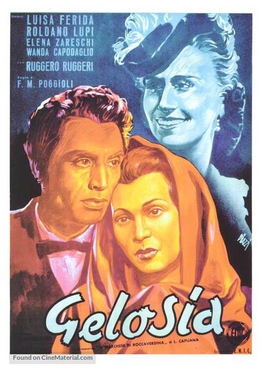
Jealousy is a 1942 Italian drama film directed by Ferdinando Maria Poggioli and starring Luisa Ferida, Roldano Lupi and Ruggero Ruggeri. The film was shot at the Cinecittà Studios in Rome with sets designed by the art director Gastone Simonetti. It belongs to the movies of the calligrafismo style. It is based on the 1901 novel Il Marchese di Roccaverdina by Luigi Capuana, which was later made into a 1953 film Jealousy.
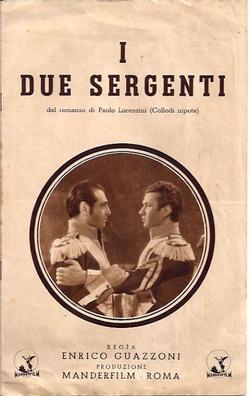
The Two Sergeants is a 1936 Italian historical drama film directed by Enrico Guazzoni and starring Evi Maltagliati, Gino Cervi and Mino Doro. It was based on the play The Two Sergeants by Theodore d'Aubigny, which has been made into films several times. It is set in the Napoleonic Wars. The film marked the debut of Alida Valli who had until recently been a student of the Centro sperimentale di cinematografia. Valli went on to be a leading star of Italian cinema.
Antonio Meucci is a 1940 Italian historical film directed by Enrico Guazzoni and starring Luigi Pavese, Leda Gloria, and Nerio Bernardi. It portrays the life of Antonio Meucci, the nineteenth century inventor and supporter of Giuseppe Garibaldi. The film was shot at the Cinecittà Studios in Rome.
The Ambassador is a 1936 Italian historical comedy film directed by Baldassarre Negroni and starring Leda Gloria, Luisa Ferida and Maurizio D'Ancora.

Territorial Militia is a 1935 Italian comedy film directed by Mario Bonnard and starring Antonio Gandusio, Rosina Anselmi and Leda Gloria. The film's sets were designed by the art director Virgilio Marchi.

Fedora is a 1942 Italian historical drama film directed by Camillo Mastrocinque and starring Luisa Ferida, Amedeo Nazzari and Osvaldo Valenti. It is based on the 1882 play of the same title by Victorien Sardou.

The Secret of Villa Paradiso is a 1940 Italian crime drama film directed by Domenico Gambino and starring Luisa Ferida, Giovanni Grasso and Mino Doro. It was shot at the Cinecittà Studios in Rome. The film's sets were designed by the art director Salvo D'Angelo.

















